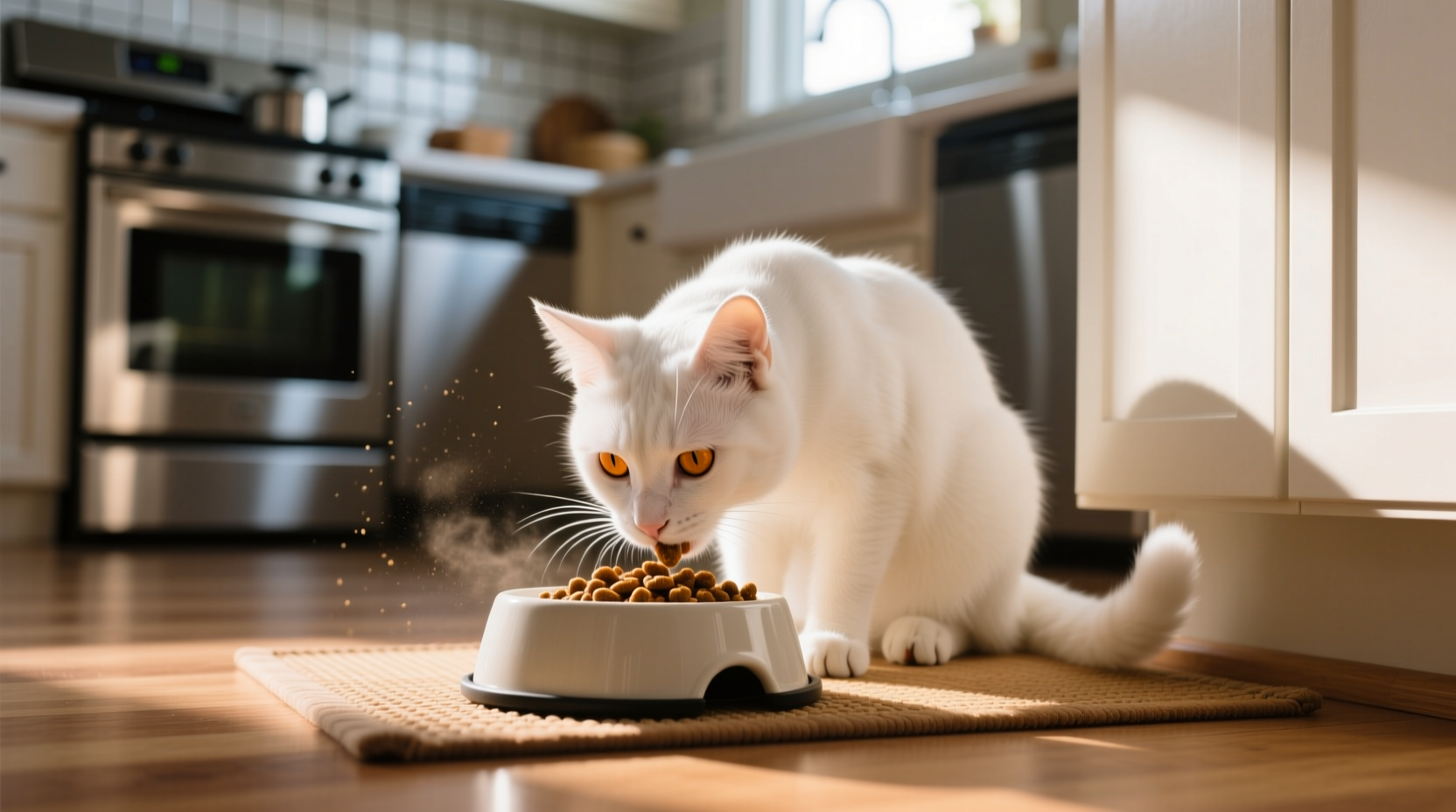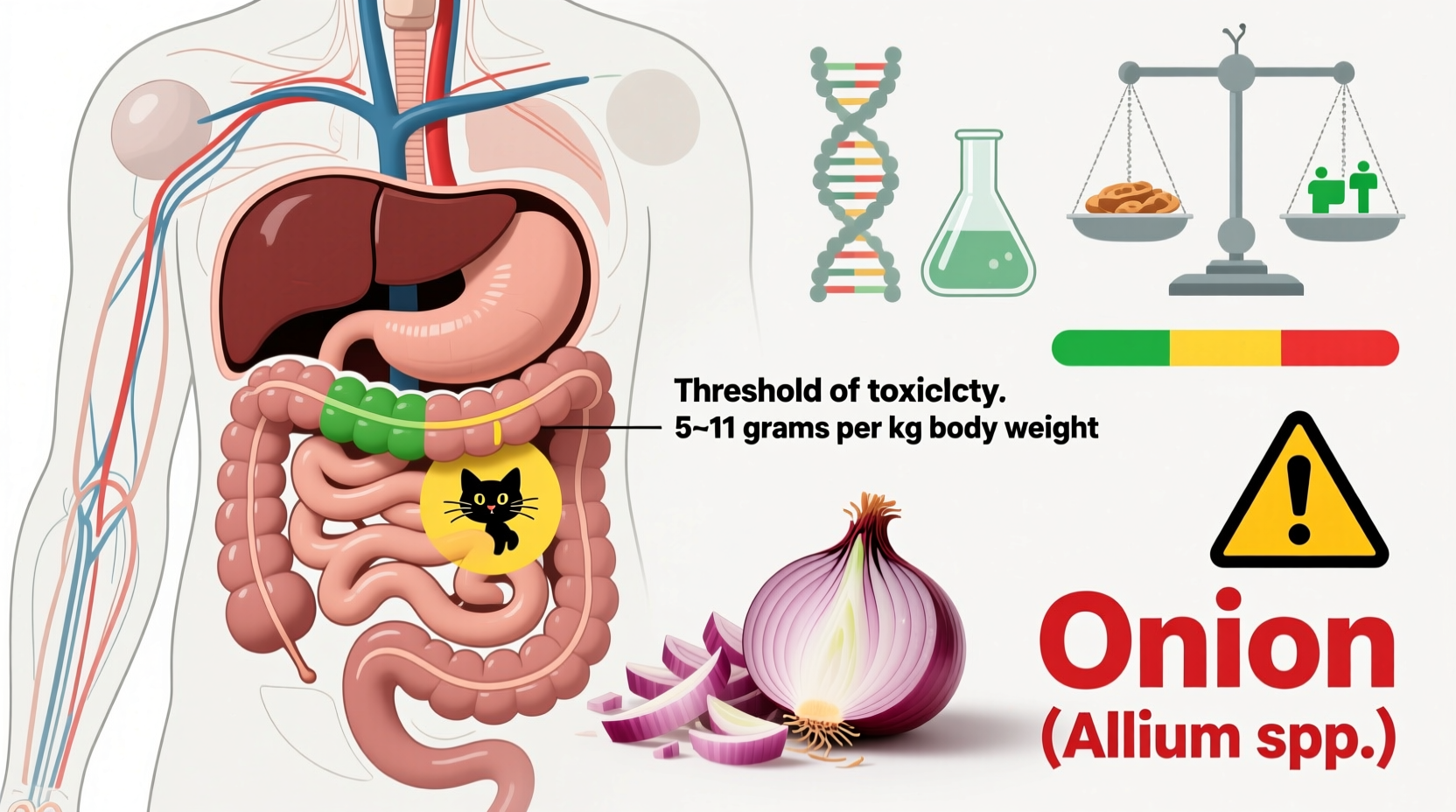Immediate Answer: As little as 5 grams of onion per kilogram of body weight can cause toxic effects in cats. For an average 4.5 kg (10 lb) cat, just 22.5 grams (less than 1 ounce) of onion can be dangerous. All forms of onion - raw, cooked, powdered, or in juice - are toxic to cats due to compounds that damage red blood cells.
Why Onions Are Dangerous for Your Feline Friend
Onions contain N-propyl disulfide, a sulfur compound that oxidizes hemoglobin in red blood cells, causing hemolytic anemia. Cats lack the enzyme glucuronyl transferase needed to properly metabolize these compounds, making them particularly vulnerable. Unlike humans who can safely consume onions, even small amounts can trigger a toxic reaction in cats.
| Cat Weight | Minimum Toxic Dose | Equivalent Household Measurement |
|---|---|---|
| 2.3 kg (5 lbs) | 11.5 grams | 2.3 teaspoons chopped onion |
| 4.5 kg (10 lbs) | 22.5 grams | 4.5 teaspoons chopped onion |
| 6.8 kg (15 lbs) | 34 grams | 6.8 teaspoons chopped onion |
Symptoms Timeline: What to Watch For After Onion Exposure
Understanding the progression of onion toxicity helps you recognize when immediate veterinary care is needed:
- 0-24 hours: Vomiting, diarrhea, abdominal pain, and lethargy may appear
- 1-3 days: Hemolytic anemia develops as damaged red blood cells rupture
- 3-5 days: Critical symptoms emerge including pale gums, rapid breathing, weakness, and dark urine
- 5+ days: Without treatment, severe cases can lead to organ failure or death
What to Do If Your Cat Eats Onions: Immediate Action Steps
If your cat has consumed onions, follow these vet-recommended steps:
- Calculate exposure amount: Estimate how much onion was consumed relative to your cat's weight using the toxic dose table above
- Contact animal poison control: Call the ASPCA Animal Poison Control Center (888-426-4435) or Pet Poison Helpline (855-764-7661) immediately
- Do not induce vomiting: Unless specifically instructed by a veterinary professional
- Bring evidence to the vet: Take any remaining onion product, packaging, or vomit samples to help with diagnosis
- Monitor closely: Watch for symptoms while en route to the veterinary clinic
Preventing Onion Poisoning: Practical Safety Measures
Protect your cat with these evidence-based prevention strategies:
- Secure food preparation areas: Keep cats out of the kitchen during cooking, especially when handling onions, garlic, or other alliums
- Store leftovers safely: Never leave human food containing onions unattended where cats can access them
- Read pet food labels: Avoid commercial cat foods containing onion powder or garlic powder as ingredients
- Be cautious with homemade diets: Consult a veterinary nutritionist before preparing homemade cat food
- Educate household members: Ensure everyone understands which common foods pose risks to cats

Understanding the Science Behind Onion Toxicity in Cats
Research from the Veterinary Information Network confirms that all members of the Allium family (onions, garlic, leeks, chives) contain organosulfur compounds that cause oxidative damage to red blood cells. The Merck Veterinary Manual states that cats are three to five times more sensitive to these compounds than dogs due to their unique physiology.
A 2022 study published in the Journal of Feline Medicine and Surgery found that repeated small exposures to onion powder (as little as 0.5% of total diet) over several days caused significant hematological changes in test subjects. This means that even seemingly insignificant amounts of onion in human food scraps can accumulate to toxic levels when fed regularly.
Common Misconceptions About Onion Toxicity in Cats
Several dangerous myths persist about cats and onions that need clarification:
- Myth: Cooked onions are safe for cats
Fact: Cooking doesn't destroy the toxic compounds - all forms remain dangerous - Myth: Only large amounts cause problems
Fact: Small repeated exposures can cause cumulative toxicity over time - Myth: Garlic is safer than onions for cats
Fact: Garlic contains higher concentrations of toxic compounds than onions
When to Seek Emergency Veterinary Care
Contact your veterinarian immediately if your cat shows any of these symptoms after potential onion exposure:
- Pale or yellow-tinged gums (indicating anemia)
- Rapid breathing or heart rate
- Extreme lethargy or weakness
- Dark orange or red urine
- Refusal to eat for more than 12 hours
Veterinary treatment typically involves supportive care including intravenous fluids, oxygen therapy, and in severe cases, blood transfusions. Early intervention significantly improves recovery outcomes, with most cats making a full recovery when treated promptly.











 浙公网安备
33010002000092号
浙公网安备
33010002000092号 浙B2-20120091-4
浙B2-20120091-4